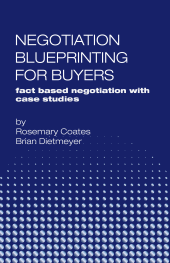 Twenty years ago, salespeople were trained to ask customers certain questions (What is your budget? Who will decide? What date are you working toward?). In this age of easy access to extensive information, asking these questions, especially without value context for the customer, does not generally help to obtain the information a salesperson needs. In fact, asking the questions the way we were trained 20 years ago might hurt your credibility.
Twenty years ago, salespeople were trained to ask customers certain questions (What is your budget? Who will decide? What date are you working toward?). In this age of easy access to extensive information, asking these questions, especially without value context for the customer, does not generally help to obtain the information a salesperson needs. In fact, asking the questions the way we were trained 20 years ago might hurt your credibility.
Today the quest for new information or data validation means that salespeople need to do some research first, then frame questions that have been carefully considered. Questions need to be developed so the value and context is clear to the customer.
Start with considering the opportunity from the view point that there will not be a deal with you. A little research will help you to understand what the customer might do if they do not do a deal with you. If there is no deal with you, would they go to your competitor? Or perhaps they might do it themselves? Or perhaps they will do nothing? This is a discussion a customer does not normally expect to have with a sales person. The same research will help you to guide the customer with good follow-up questions to reveal the information you are looking for. Asking questions to understand what the customer would do if they do not do a deal with you, will help you to understand who/what your biggest competitor really is, and help to reveal to you how important this deal is to the customer. At the same time, your questions will help the customer to evaluate their own decisions.
Next, think about the consequences of no agreement (CNA). This means consider the consequences to you if there is no deal (you already have a good idea of what these are) and the consequences to the customer. You might need to do a little research to uncover the impacts to the customer if they do not do a deal with you, instead preferring an alternative (one of your competitors, doing it themselves, or doing nothing).
Always thinking from the customer point of view, you can do a CNA analysis based on the customer’s alternative to doing a deal with you. The results of a CNA analysis will reveal the customer decision criteria. This small amount of research and thinking prepares you for the next customer discussion about their key decision criteria. This allows you to change the usual conversation from ‘… tell me your decision criteria…’ to a much better conversation with the customer. (For example ‘After thinking about the deal from your perspective, it would appear that these would be your key decision criteria for this deal. Are there any criteria that I have missed? Are there any criteria that you have decided are not important? Have you considered criteria XX in your thought process?’ )
Asking thoughtful questions can make a difference to your credibility and relationship with key customer contacts. Just a little research and preparation starting with anticipating ‘what happens if there is no deal?’ can increase your understanding of what the customer is thinking.





